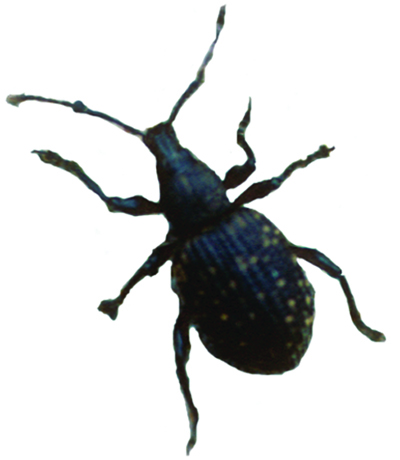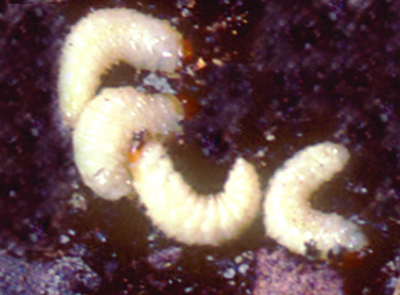Black vine weevil
July 30, 2015
Otiorhynchus sulcatus
These snout beetles overwinter in the soil as early instar grubs, or as adults. Look for feeding by over-wintering adults as Viburnum opulus or Weigela are blooming.

Adults weevils are active at night, but can be detected during the day by laying down boards or using pitfall traps.
Look for overwintering larvae to emerge as adults as Hydrangea arborescens ‘Grandiflora’ or ‘Annebelle’ are blooming. Adult weevils (all female) lay eggs for extended periods during the summer.
Hosts
Azalea, rhododen dron, euonymus, hemlock and yew.

Larvae and pupae of black vine weevil are found in the soil. Larvae cause serious injury by feeding on the bark of roots and stems. Foliage of plants injured by weevil larvae may turn brown or die suddenly.
Management
Management is usually targeted toward adults. Contact your Extension agent for recommendations.

Typical leaf notching caused by adult weevils feeding on foliage.
Print a PDF of this page: Black vine weevil



 Print
Print Email
Email



